Namoruakwan Lokorkor Water and Sanitation Project Success Story
Alleviating Insecurity among Residents of Lokorkor through Water Provision
Namoruakwan Lokorkor Water and Sanitation Project is located at Lokorkor in Katilia Ward, Turkana East Sub-County. It is made up of five (5) villages, namely Lokorkor, Namoruakwan, Nayokori, Akatorong’ot and Kang’ibenyoi. Turkana East Sub-County is one of the seven Sub-Counties mostly affected by drought during dry seasons. The residents of Lokorkor mostly rely on the Kerio seasonal river for domestic and livestock farming purposes.
The economic activity of the area is mixed farming, pastoralism and crop farming practised along the banks of the river. Villages are highly dependent on the seasonal Kerio River as their main source of water; however, the quality of water is poor, and during the dry season, the river dries up completely. This would lead to women and girls having to travel for long distances, approximately 5km, with their animals in search of water.
During such difficult times, women and children are the most affected, as they spend most of their time looking for water, which subsequently leads to most households leaving out essential water usages such as taking a bath. Children would also often miss school as they had to help their parents look for water, affecting their education.
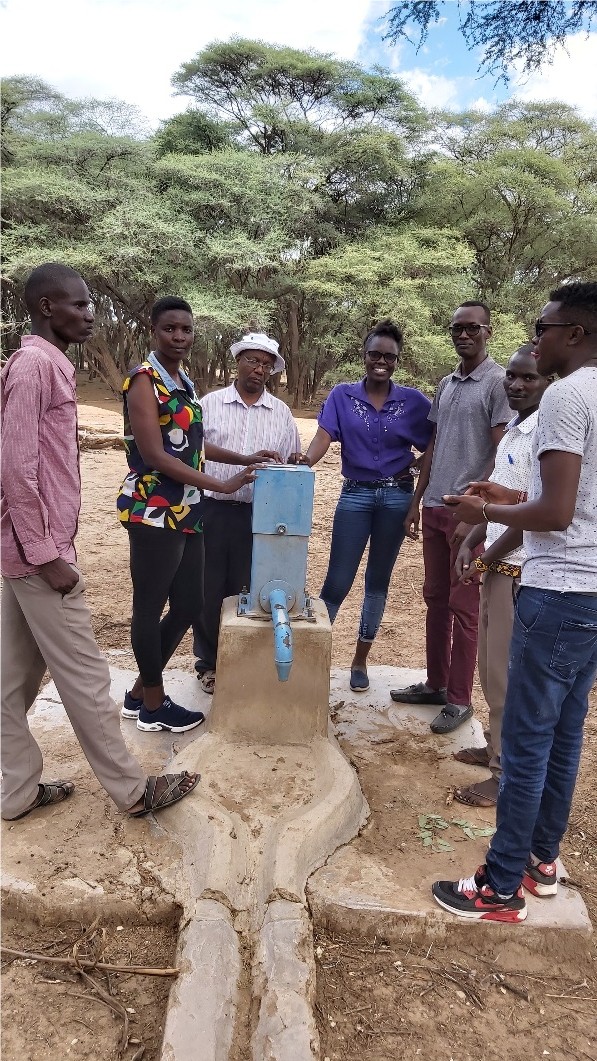
Broken-down hand pump
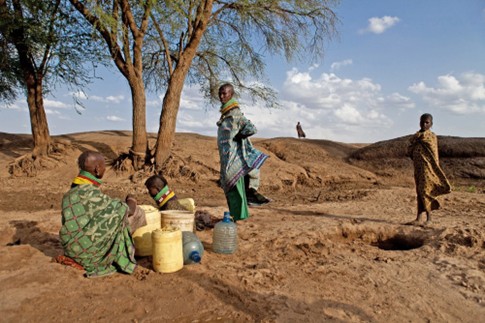
Women and girls fetching water in a dry riverbed
The Namoruakwan Lokorkor water and sanitation project was implemented by Namoruakwan Water Users Group, established through the great efforts of the County Government of Turkana in 2018. Through its proposal to WaterFund, the project was anticipated to benefit 2,400 residents with a per capita investment cost of KSh 12,367.
Namoruakwan Water Users Group, through the County Government of Turkana, reached out to WaterFund for opportunities in partnership in the intervention of improved water access, supply and sanitation in their area. WaterFund financed Namoruakwan KSh 29.6 Million to implement a water and sanitation project within 9 months under WaterFund’s Green Growth and Employment Programme (GGEP). The GGEP Programme has been financed by the Danish International Development Agency with the main objective of improving and sustaining access by communities and households to water and sanitation for their domestic and productive needs.
The Namoruakwan Lokorkor water and sanitation project involved: access and distribution of water for domestic and animal use: construction of 1 block of 4-door VIP latrines for boys at Lokorkor primary school, 2 blocks of 2-door VIP latrines at Lokorkor dispensary, removing the broken-down hand pump, equipping and solarisation of Namoruakwan borehole, construction of one elevated steel tank with a of capacity 50m3 at Moruarengán hill, construction of 3no. Cattle troughs for animals; construction of 5no. Water kiosks and construction of WUA office block. The project had savings which were used to buy buckets, washing soaps, bathing soaps and inner clothing for both schoolboys and girls and reusable sanitary towels for school-going girls.
Namoruakwan Lokorkor water and sanitation project was launched on 20th January, 2020, to kick-start the construction works of gravity main pipes and water storage tanks that would lead to a water distribution network of 10 kilometres serving 550 households with an average of 6 people per household. The project launch was graced by Mr. Moses Natome, Chief Officer for Water Services, Environment and Mineral Resources, Turkana County.
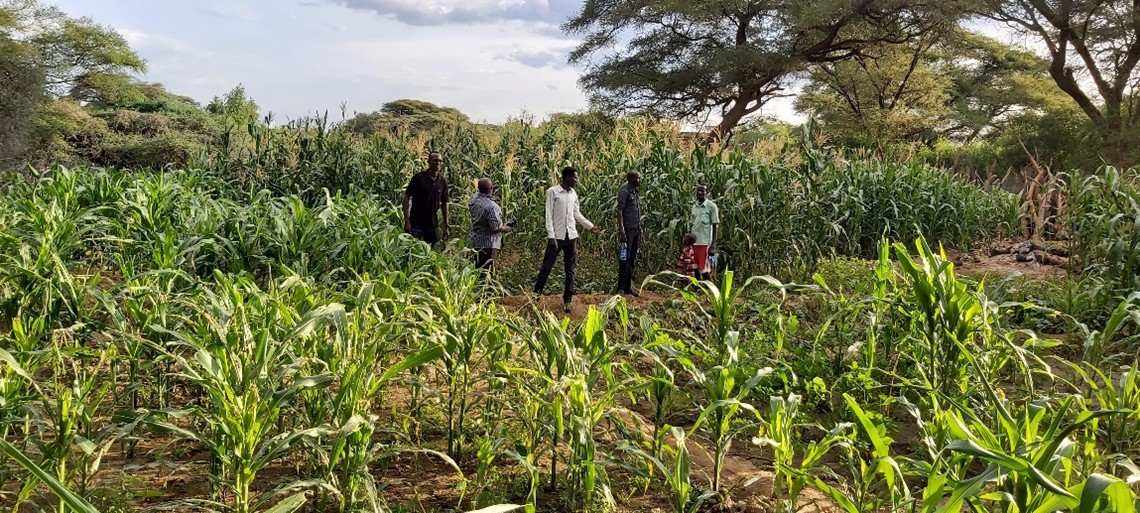
Farming done along the borehole area
The project was substantially completed in November 2020 and became operational in January 2021. The current project operational model involves a management committee formed by the local community representatives from each village, with the area sub-county water office providing technical support.
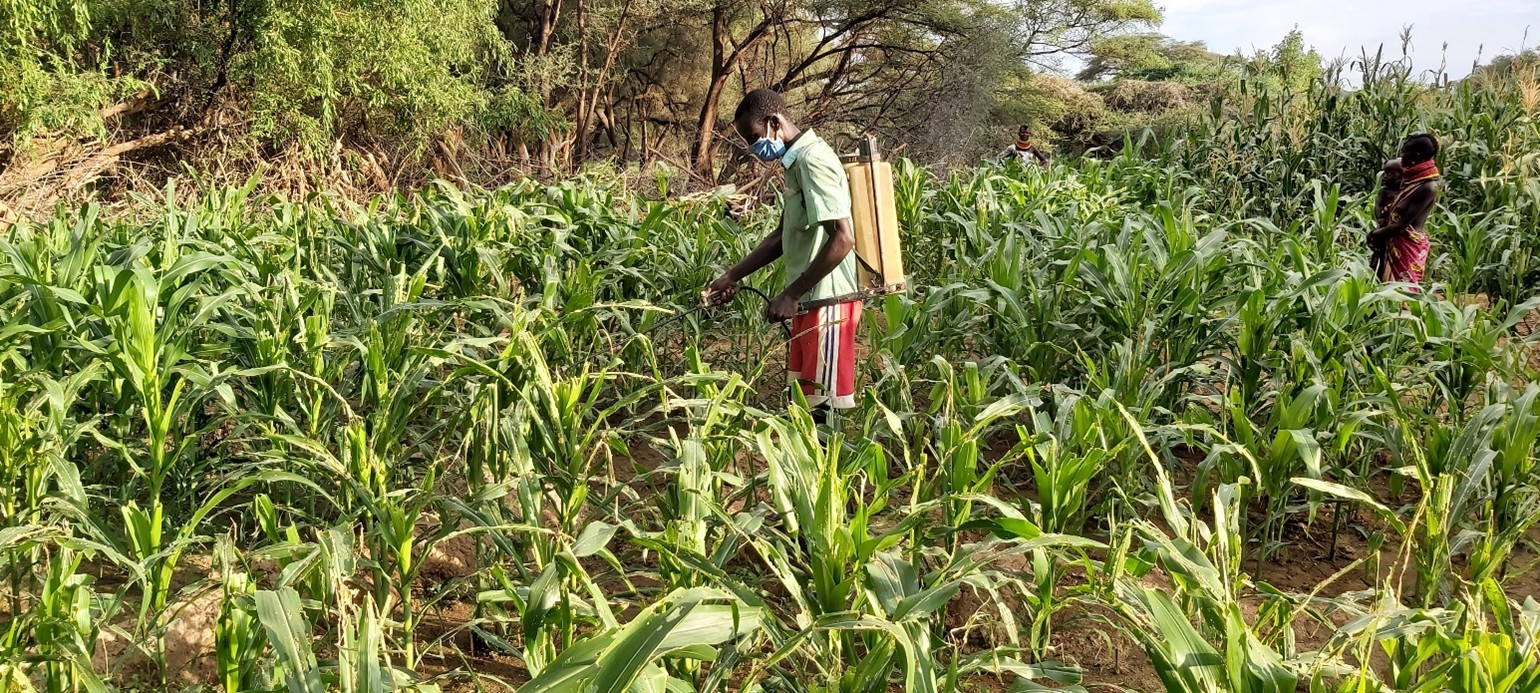
A beneficiary spraying insecticides
The Namoruakwan Lokorkor water and sanitation project has been a great success. By the month of February 2021, the entire population in all the villages could access clean water at all times from the water points within the villages. There was also reported increased settlement within the area due to the availability of water for both humans and livestock. Cases of animal theft occasioned by movement in search of water had greatly reduced. The connected institutions include 2 learning institutions and 1 health centre.
Catherine Emojong Ekutan, a mother of two and treasurer of Namoruakwan water users group, is a happy beneficiary and says:
“This project is a blessing to residents of Lokorkor, especially for us women. Accessing clean water has become easier because women and children could spend most of their time walking to fetch water from Kerio. It was not easy fetching water, especially when the River Kerio had overflowed from floods, or during the dry season, when we were forced to spend more time allowing for filtration to take place from the hand-dug wells that are within the river, in order to get clean water. During such times, women would fetch water until late in the evening, which became a security issue in the area. Now with the completion of the water kiosks around our villages, we are able to fetch water safely within our village at any time.”
The water project office is operational from Monday to Friday on normal working hours (8 am to 5 pm). The Water Users Association members currently run all operations in a rotational manner.
In addition, the Turkana South Sub-County water office does regular monitoring and provides support to the project committee in running the project. Part of the project involved the installation of a solar-powered remote monitoring sensor, which enables any relevant party to view data through the GSM network or the internet. This system reports whether the borehole is pumping or not and the power available for the pump.
The water project is a great success and has led to a change in ways of life for the community. One community member who lives near the borehole has taken advantage of the spillage from the cattle trough. He has directed the spilt water to a piece of land where he has planted maize and vegetables. There is a reported increase in school enrolment due to increased settlement in the area. The local dispensary has also reported a notable decrease in waterborne disease cases.
Picture Gallery
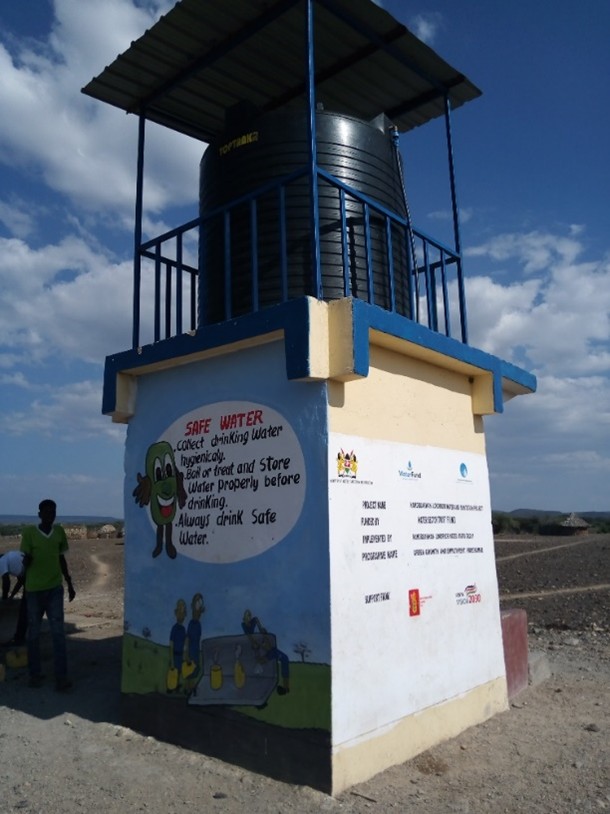
Branded water kiosk
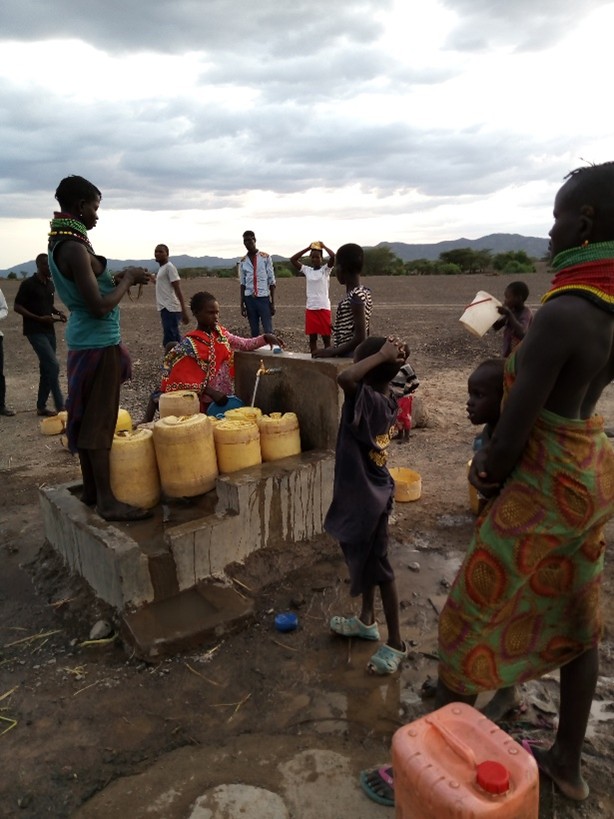
Beneficiaries fetching water at a school yard tap
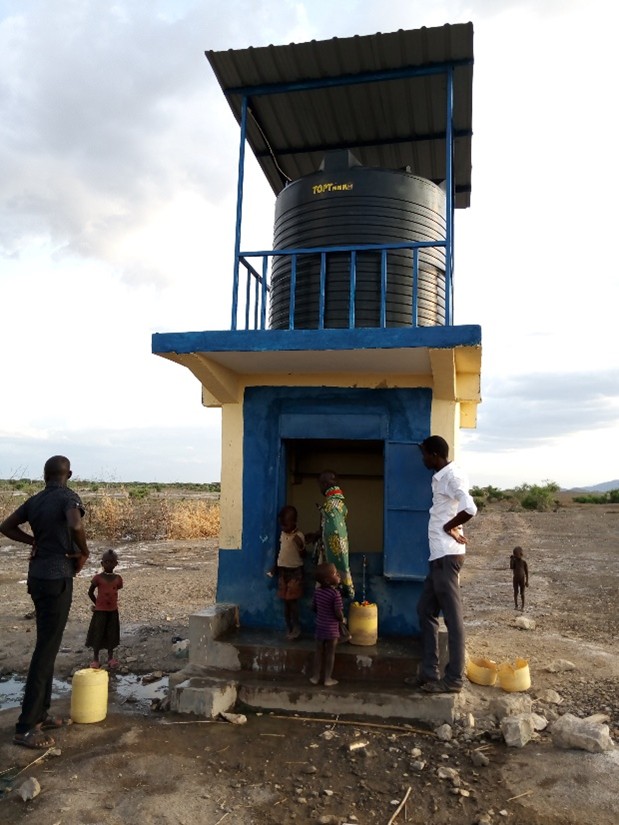
Water kiosk at Nayokori village
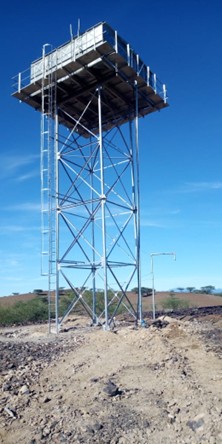
50M3 elevated steel tank
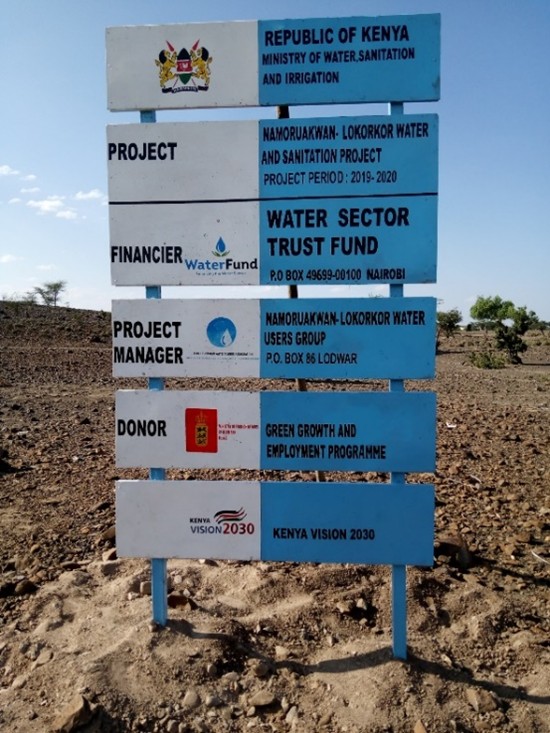
Project signpost
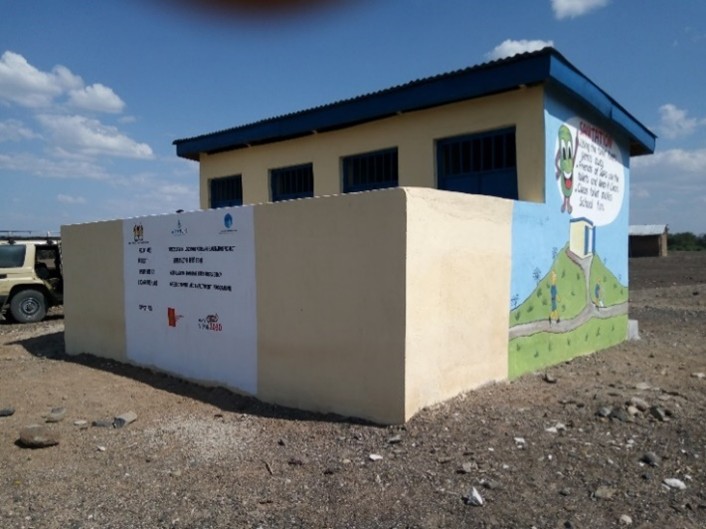
4-door VIP latrine
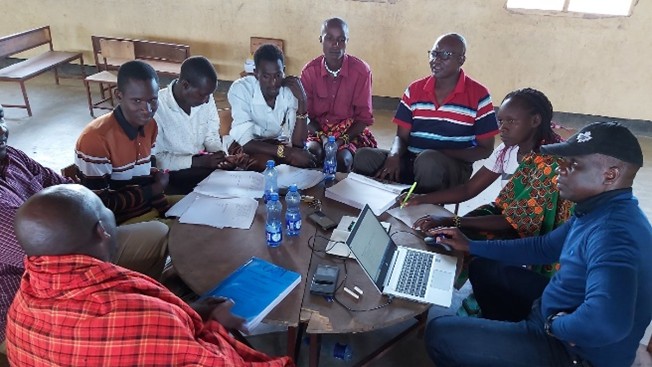
Evaluation Committee during the evaluation
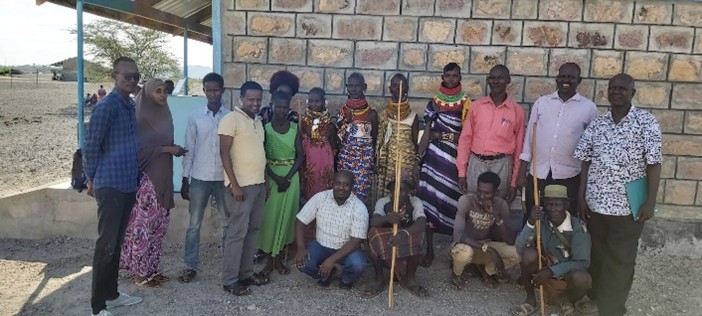
Namoruakwan Water Committee during contract signing
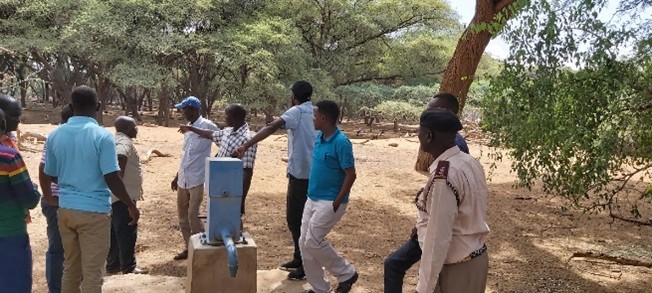
Site visit by potential contractors
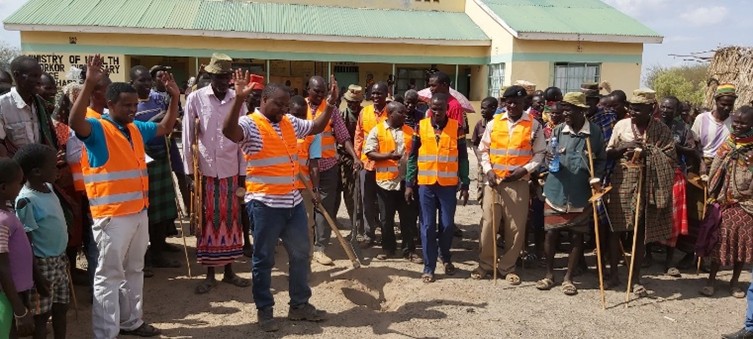
Groundbreaking ceremony by County Chief Officer, community, local leaders and WaterFund
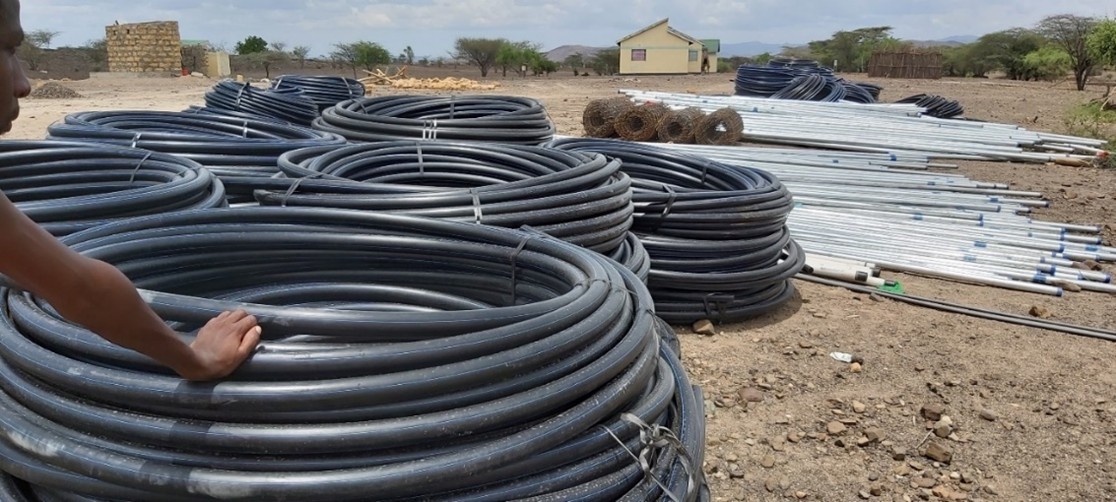
Delivered pipes for water works
Kizingitini Water and Sanitation Project Success Story
Lamu County is a water-stressed county. The county is one of the Arid and Semi-arid land (ASAL) and mainly depends on groundwater and rainwater harvesting structures (like djabias) for water supply. Kizingitini village is in Lamu East Subcounty with the residents mostly dependent on djabias for water supply.
However, due to inadequate rainfall in most years, the djabia water is not enough to cater for the daily water consumption of the residents. For instance, this area usually gets very little, short rains (sometimes no short rains at all), leading to long drought periods, thereby increasing the water shortages. The Short Rain Assessment (SRA) done by National Drought Management Authority (NDMA) categorised the area water situation as “alarming”.
To respond to this alarming situation, the National Government of Kenya had initially installed a 2m3/hr reverse osmosis (R.O.) plant in 2015 that was powered by a diesel generator, which proved expensive to maintain and with less production. Most often the plant has a breakdown and takes long time to maintain. Unfortunately, for the residents of Kizingitini village, this project was not enough to quench the thirst of about 700 households in the area.
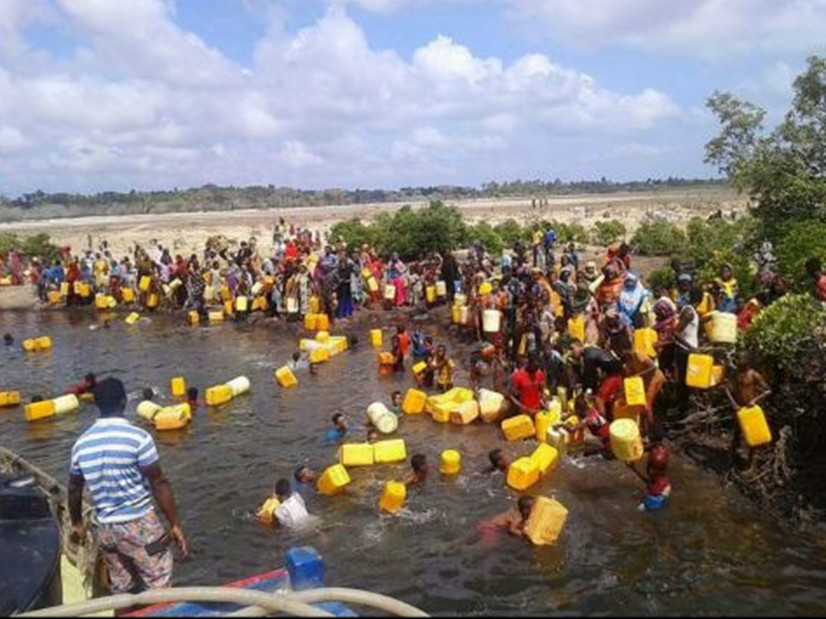
A photo taken in March 2017 showing Pate Island residents scrambling for fresh water
For instance, during 2017 drought all djabias dried and the residents only depended on boat water trucking from Amu Island as the R.O. also became non-operational. It was very cumbersome period for the resident as people scrambled for water, here the law of the jungle of “survival for the fittest” take effects as shown in this photo taken in 2017 drought period.
Similarly, there are private water vendors who also do water trucking from Amu Island but sale the water at exorbitant prices that is not possible for the local mwananchi. For example, a 20 litre jerry can of water was sold as high as Ksh 150 during the hype of 2017 drought. Those were painful moment for people of Kizingitini village.
It is because of these challenges that WaterFund through support of DANIDA implemented Kizingitini Water and Sanitation Extension Project from 2019 to 2021 at Kizingitini village. Fast forward in 2021 the story has now changed; a lot of investment was done and the residents are now in relax mode though they are in a dry season similar to the one in 2017. The project has increased water production from 2m3 to 7m3 per hour and has heavily invested in green energy of 200 panels of 315W each and 48 No. 2170AH maintenance free batteries for power storage as well as 42 No. 125W solar panels for solar pumps.
There is constant energy supply and thus water is now flowing. The project also has a water storage capacity of 50m3 elevated water tank on a 15m high tower to make it possible for every household in Kizingitini to be connected with water by gravity. A total of pipe network of 21.21km was done to ensure the residents get water in their houses dubbed “mai mekoni” a Swahili phrase meaning “water at the kitchen”.
According to the former Chairman for the Kizingitini Water Committee, Mr. Yusuf Omar, “This project is quite a relief to the community and we are currently enjoying pure water from the plant and with proper operation and management of the station, it has the potential of supplying water to the neighbouring villages. Currently the neighbouring villages are supplied with water using water bowser from the station”.
“I no longer have to stress over getting water, moving from one djabia to the other in search of water. I am very grateful for this project. One of the biggest water project in Kizingitini,” says Miss. Nuzzla.
To increase sanitation access, 2 no. 4-door Ventilated Improved Pit (VIP) latrines with handwashing facility and hygiene promotion messages were constructed at both Kizingitini Girls’ Primary School and Kizingitini Boys’ Primary School. Here, a total of 16 doors of toilets were added to these learning institutions, thereby improving the sanitation situation of the schools and ensuring the school conforms to the Ministry of Education's child per door ratio.
Additionally, 1 No. 2 door VIP latrine with handwashing facility and branded with hygiene promotion messages was constructed at Kizingitini Dispensary, which is situated next to the Kizingitini Water Station. The water is appreciated in the whole island and will ensure the communities drink clean, safe water throughout the year.
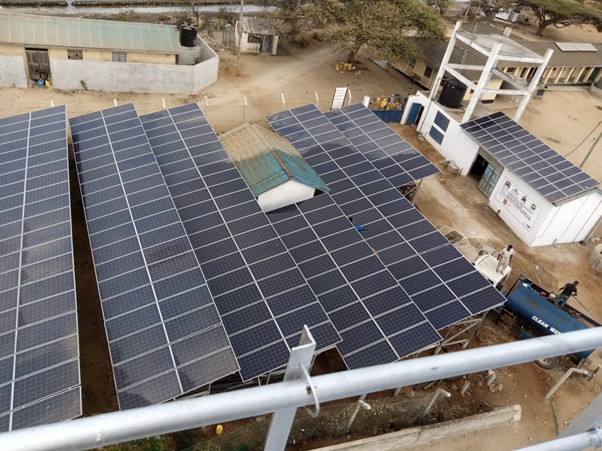
Photo showing 200 no. 315 Watts panels installed at Kizingitini water station
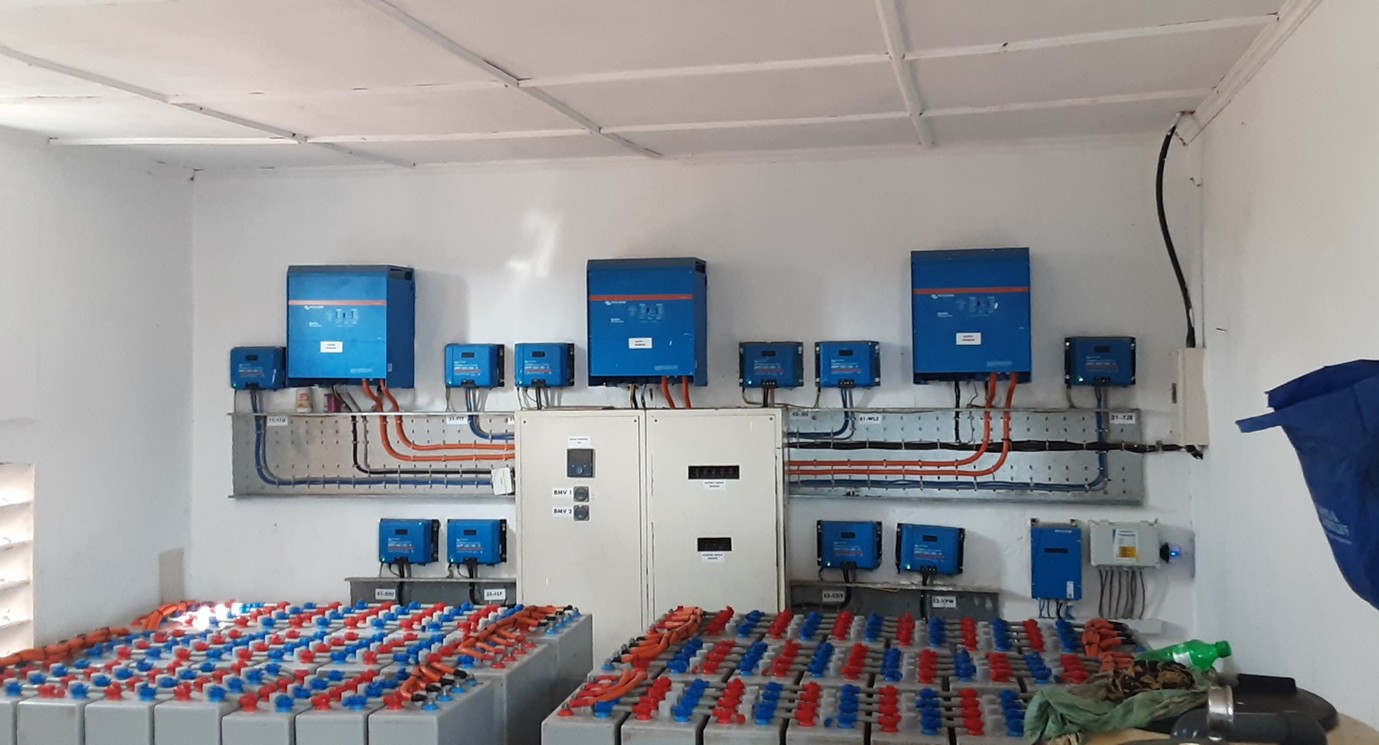 Photo showing the assembled 48 no. free maintenance batteries and the control unit
Photo showing the assembled 48 no. free maintenance batteries and the control unit
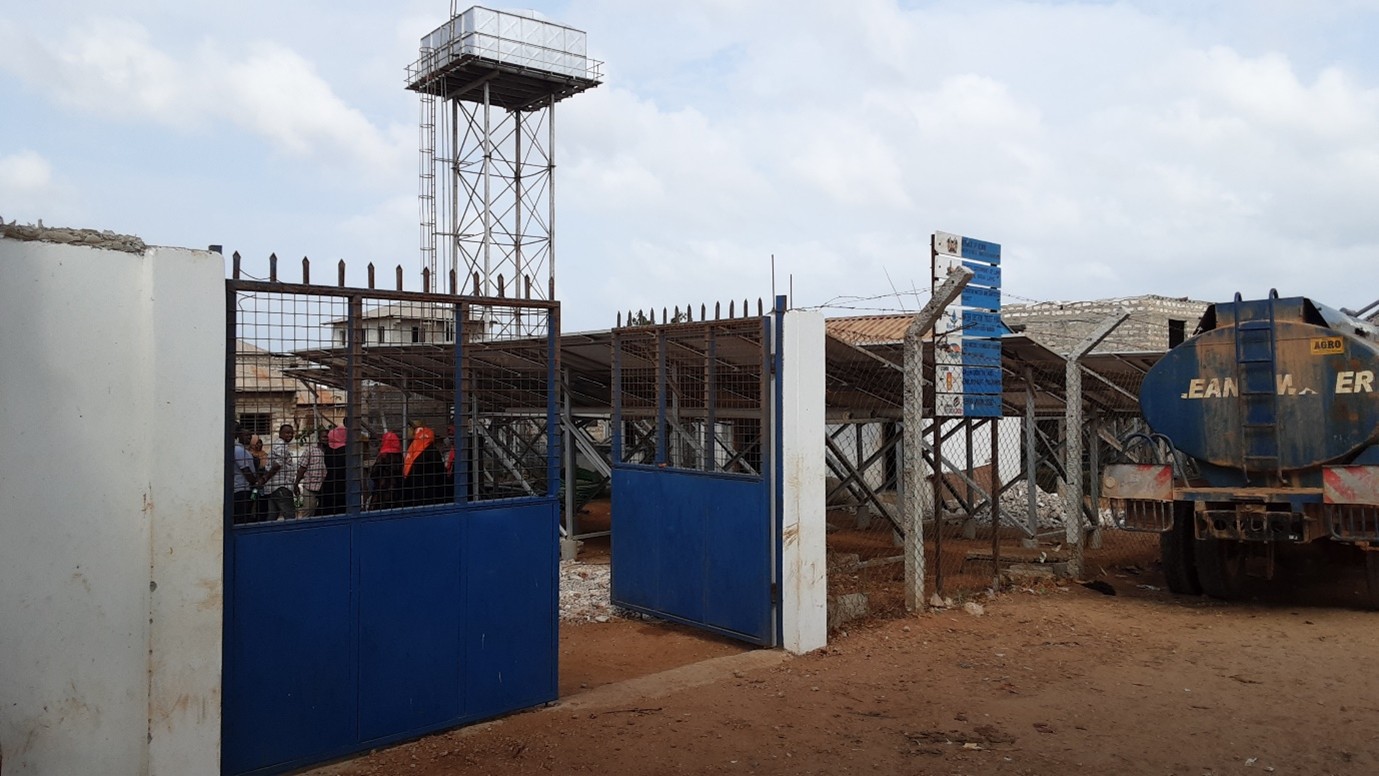 Photo showing 15m high 50m3 steel elevated tank
Photo showing 15m high 50m3 steel elevated tank
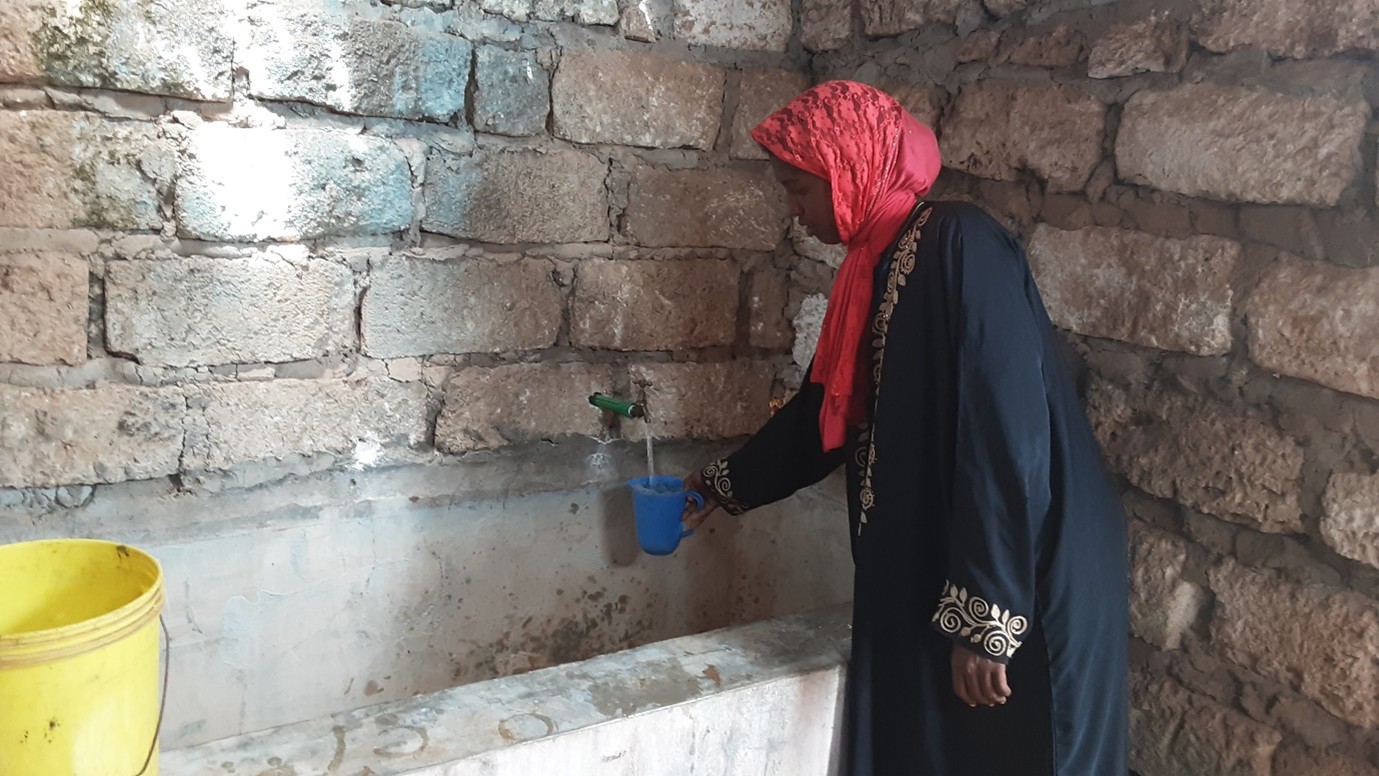 Photo showing beneficiaries fetching water from their household at the tap
Photo showing beneficiaries fetching water from their household at the tap
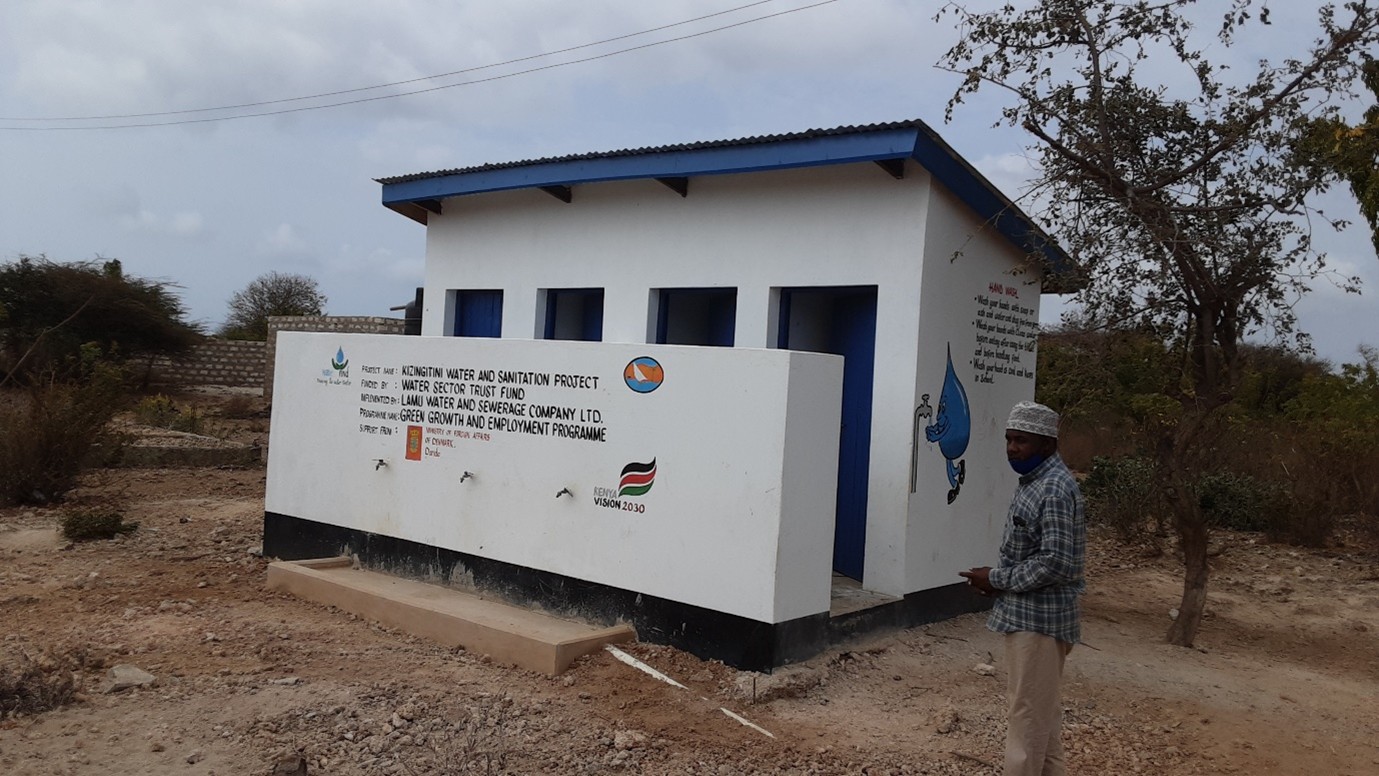 Photo showing 4-door VIP toilet at Kizingitini Boys Primary School
Photo showing 4-door VIP toilet at Kizingitini Boys Primary School
Output-Based Aid programme brings affordable piped water to Murang'a South
Esther Nyambura Muiruri, a resident of Sabasaba area in Murang’a South town in Tana County, is the proud head of a household that was recently connected to tap water, thanks to the Output-Based Aid (OBA) programme of the WSTF.
Murang’a South Water and Sanitation Company (MUSWASCO), an urban water utility in Tana County, became the first water utility to access an OBA subsidy facility under the WSTF. “We were much honoured to be the first water utility in Kenya to receive a subsidy under the OBA programme”, says Mary Nyaga, the Managing Director of MUSWASCO.
The OBA subsidy facility is offered under the Results-Based Financing (RBF) programme administered by the WSTF. A total of 11.835 million USD was extended to the Government of Kenya as a grant by the Swedish International Development Agency (SIDA) through the World Bank programme, for a period of three and a half years.
“I am happy to be among the first beneficiaries of an individual water connection in Sabasaba under the MUSWASCO OBA programme. I no longer have to walk long distances to fetch water to wash my dishes. I can simply open the tap in my kitchen,” says the happy Muiruri.
MUSWASCO was pre-financed by Sidian Bank through a commercial loan facility for KES 17.58 million to introduce and improve infrastructure in the three areas of Kenol, Sabasaba and Kabati with a target to provide 1,500 individual water connections. The project, which began in September 2014, was fully completed in July 2015. From the KES 17.6 million, MUSWASCO received a total of KES 12.5 million from the Water Fund, as 60% subsidy under the OBA programme towards the repayment of its loan. This reduced the principal loan facility to KES 5.1 million.
“Despite accessing the loan at a high interest rate of 17% per annum, the subsidy is now making it very easy for the water utility to repay the balance of the loan over the next 60 months,” says Nyaga.
The OBA facility, which is running from December 2014 to June 2018, is targeting water utilities that are investing in water and sanitation projects aimed at urban low income areas in Kenya. The OBA programme is contributing to the SDG 6 in Kenya, which is to ensure the availability and the sustainable management of water and sanitation for all.
“My children can now go to school on time as they no longer spend hours fetching water from rivers and dams. Also they no longer suffer from diarrhoea as the water is now very clean.”
Esther Nyambura Muiruri
Madogo Water Resources Users Association in Tana River County
A desert safari through Garissa to Madogo Water Resources Users Association takes you through an endless stunning range of desert landscapes coupled with scenic beauty. It’s a place where normal rules about living are suspended or even absent. Madogo Water Resources Users Association (WRUA) is located in Madogo ward, Tana River County, Tana catchment area. The WRUA was formed in 2008 by Madogo Farmers Association who later incorporated other abstractors, riparian land owners, non-abstractor members (pastoralists) and other stakeholders within Madogo division. The Madogo sub-catchment is situated approximately 50 km south of Kora National Park along the Tana River. It stretches approximately 110 km along the Tana from Kora National Park to Lagha Darime, which is 50 km north of Bura Irrigation Scheme. The Madogo watershed covers an area of 2100 square km.
The Madogo WRUA developed a sub-catchment management plan (SCMP) that they are currently using as a guide in the implementation of all their activities. They have managed to secure funds from the Water Fund and various other partners. WSTF has funded the WRUA as from level 1 up to currently level 4 as per the WRUA Development Cycle funding criteria. Madogo WRUA has received level 1, level 2, level 3 and level 4 disbursements from the WSTF amounting to KES 11,775,600.
Tana River, which drains into the Indian Ocean, is the major source of water in the area. Madogo River, a tributary of the Tana, is seasonal and only active during the rainy season. Madogo sub-catchment is a water-scarce area, thus classified to be in alarm state due to low flows/ inadequate availability of water during dry spells to meet the water demand, poor quality due to siltation in Tana River, floods, high mineralisation in ground water, and water use conflicts due to sparse distribution and access of the resource. Some of the challenges that the WRUA has addressed include the acute water scarcity, the water use conflicts, the water pollution, encroachment/ illegal use of the riparian land and malkas, and the catchment degradation.
Madogo WRUA implemented a number of activities. Firstly, their water storage capacities have been enhanced through the installation of roof water harvesting tanks, sand dams and controlled sand harvesting. The community gave the feedback that they have experienced improved water availability and access. A reduced walking distance to water sources allowed more time for other productive activities. The water quality has improved and occurrences of waterborne disease, a previous menace, have been eradicated. The association furthermore introduced small-scale irrigation, which has led to improved livelihoods. Participation in sub-catchment management led to a reduction in water-related conflicts. Improved financial management also became visible as a result of various trainings by the Water Resources Investment and the Water Resources Management Authority.
Ngumi Water and Sanitation Project in Kiambu County
Ngumi Water and Sanitation Project is located about 35 km from Nairobi in Kikuyu location of the County of Kiambu. The area has no surface water and the nearest river is more than 8 km away. The story of this community-based project started in 1994, when the residents came together and formed the organisation with the main aim of providing water.
Karanja Mungai, the chairman of Ngumi Water and Sanitation Project, says it was very cumbersome for the community at Ngumi to access adequate clean water and they often spent the whole day trying to fetch one jerrican of water: "As a community we needed a project within the community that could get us water."
In 2010, Ngumi Water and Sanitation Project approached the Water Fund for a partnership they believed would enable them access adequate and safe drinking water and improved sanitation facilities. This dream soon became a reality when the WSTF, impressed by the residents’ plan to solve their persistent water problem, partnered with them through its Rural Investment Programme. “WSTF funded our project in two phases, the first phase is where we put up the structures and sunk a borehole for the cost of KES 8 million. The Ngumi community contributed 15% of that amount through labour and construction materials. The second phase was also funded by the Water Fund at the cost of KES 4 million,” explains
Karanja Mungai.
The WSTF's Rural Investment Programme is developed to enhance the capacity of communities to apply for, manage, implement and maintain their own water and sanitation facilities, and Ngumi Water and Sanitation Project is a shining example. The project delivers clean piped water to its members and a host of other beneficiaries including schools, hospitals, churches and even farmers who are practising greenhouse agriculture. The project has also constructed modern toilets and sanitation facilities, located in selected public places, to improve hygiene and reduce the disease burden amongst the community. Ngumi Water and Sanitation Project has so far connected and serves 170 households, which translates to over 3000 residents, with clean piped water, and remains a big success and example of how a community can transform lives by working together.
